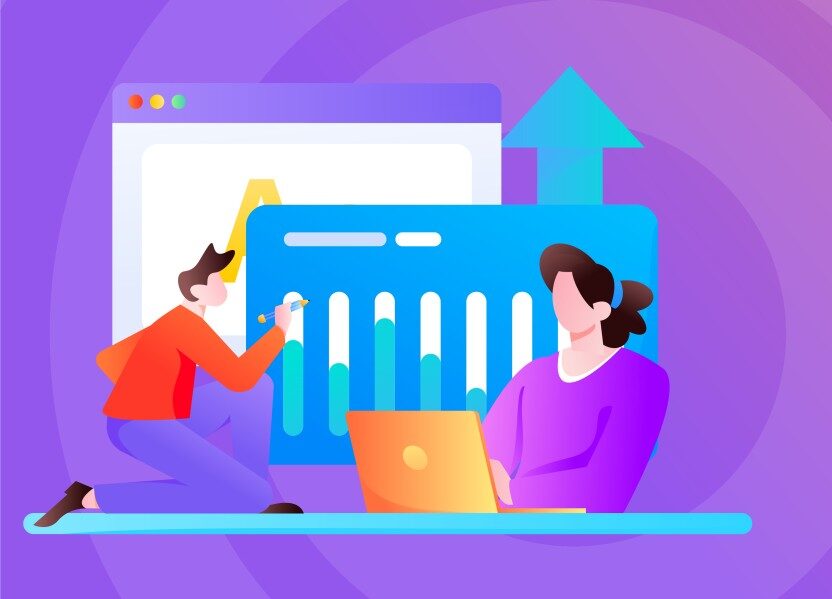B2B Growth: Elevating Success with Product-Led Strategies Across the Customer Journey
Technology today moves at a blinding speed. Product-Led Growth (PLG) is a business strategy that prioritizes the product itself as the primary driver of customer acquisition, retention, and expansion. PLG shifts the focus to the product experience, allowing the product to speak for itself and guide users through the customer journey. Some notable PLG-focused companies include:
- Slack: Slack, a team collaboration and messaging platform, gained popularity through its user-friendly interface and a bottom-up adoption approach within organizations.
- Dropbox: Dropbox follows a freemium model, allowing users to sign up for free and then upgrade based on their needs. This approach has contributed to its widespread user base.
- HubSpot: HubSpot, a provider of inbound marketing and sales software, has embraced a PLG approach to grow its customer base through user-friendly products.
- Canva: Canva, a graphic design platform, has gained popularity through its user-friendly interface and freemium model, making design accessible to a broad audience.
- Figma: Figma, a collaborative interface design tool, has grown rapidly with a user-friendly approach and collaborative features.
Blending PLG and Traditional Sales for High-Value B2B Products
A blended model for PLG in B2B companies involves combining traditional sales-led approaches with elements of a self-service, product-centric strategy. This approach recognizes that in the B2B context, especially for complex or high-value products, a purely self-service model may not be sufficient, and a more balanced or blended approach is necessary. Here are some ways B2B companies are incorporating a blended model for PLG:
- 1) Freemium or Free Trials: B2B companies often offer freemium versions of their products or free trials, allowing users to experience the product before committing to a purchase. This self-service aspect is a PLG component that introduces users to the value of the product.
- 2) Sales-Assisted Onboarding: While users can sign up and start using the product independently, B2B companies may offer sales-assisted onboarding for larger or more complex implementations. Sales teams can guide users through the onboarding process, ensuring they maximize the value of the product.
- 3) Tiered Pricing Models: Implementing tiered pricing models allows companies to cater to both small businesses and enterprise clients. Lower-tier plans may be suitable for self-service, while higher-tier plans may include more customization and support, involving sales teams in the process.
- 4) Education and Support Resources: B2B companies with a blended model often provide extensive educational resources, documentation, and customer support to empower users to use the product effectively. This self-service approach is complemented by the availability of human support when needed.
- 5) Customer Success Teams: Customer success teams play a crucial role in a blended PLG model. These teams can proactively engage with users, providing guidance, best practices, and ensuring successful outcomes. They may also identify opportunities for upselling or expansion within the customer organization.
- 6) Data-Driven Upselling: Leveraging data analytics and user behavior insights, B2B companies can identify users who may benefit from additional features or higher-tier plans. Sales teams can then engage with these users to explore upselling opportunities.
- 7) Product-Led Sales: Some B2B companies integrate sales processes directly into their product, allowing users to seamlessly transition from a self-service experience to engaging with sales representatives when needed. This can be through in-app messaging, chat, or other communication channels.
- 8) Continuous Iteration and Experimentation: B2B companies employing a blended model for PLG continuously iterate and experiment with different approaches. They monitor user behavior, gather feedback, and adjust their strategies to find the optimal balance between self-service and sales involvement.
By combining these elements, B2B companies aim to create a customer-centric approach that maximizes the benefits of PLG while still addressing the unique needs and complexities of B2B sales. The key is to offer flexibility, cater to various customer segments, and ensure a seamless transition between self-service and sales-assisted interactions.
PLG in Action: Identifying High-Quality Product-Qualified Leads
In my previous marketing role at a rapidly evolving database-as-a-service software company, I spearheaded the delivery of Product Qualified Leads (PQLs) within a PLG framework. Collaborating with team members who generated top-funnel leads, we crafted a mid-funnel strategy focused on identifying and targeting high-quality PQLs.
We used various tools to identify look-alike audiences among our freemium user base, employing a mix of tactics across eight integrated marketing campaigns. The goal was clear: propel our message to the Ideal Profile Users (IPUs) and motivate them to move from freemium to a paid tier or expand product use. What we learned is that PLG is not just a strategy; it’s a dynamic and ever-evolving way of approaching marketing. The rapid pace of change in the PLG landscape requires marketers to live in dashboards, constantly adjusting budgets to meet quarterly marketing goals.
The focus and agility demanded by PLG make it a truly fascinating realm of marketing. If your organization is navigating the challenges of a PLG blended model, I encourage you to connect with Televerde. We would like to understand your unique challenges and help you achieve your PQL goals. Let’s collaborate and make the most of the exciting opportunities within the PLG landscape.
Want to talk? find me in X or just send me a message.


